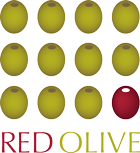Machine learning is the only practical hope we have of coping with the massive influx of data heading our way. We have always believed that logical and ordered collection, management and analysis of data is key to both business prosperity and performing social good. But, as the rate at which that data is generated accelerates, we have long been considering which future tools will be best suited to extracting full value from an organisation’s data assets.
We are not the only ones. Google, which has the power to out-invest all but its largest rivals in the world of artificial intelligence (AI), is increasingly turning to neural networks to process the massive data sets it needs to work with. It is using machine learning (AutoML) to identify the best neural network technology for any given task. This is important, Google points out, because “the success of a neural network often depends on how well it can generalise to various tasks [but] designing neural networks that can generalise well is challenging because the research community’s understanding of how a neural network generalises is currently somewhat limited.”
At Red Olive, we will be watching the development of AutoML with interest in this realm and beyond, since it can be applied to a broad range of real-world problems that would benefit from machine learning.
Accelerating data warehouse design
Businesses often have more data than they realise. Early discussions with any new client frequently involves them telling us they need to gather fresh metrics – and us pointing out what they should actually be doing is better organising the assets they already hold so they can extract value from them sooner.
This frequently requires the setting up of a data warehouse, so those assets can be brought together in a central location, sanitised, and analysed.
Data Automation specialist WhereScape is rethinking how data warehouse design can be made more efficient. It is using its WhereScape RED product to help developers create models using a customer’s actual data to accurately settle on the most appropriate architecture more quickly.
Accurate models like this make debates around data warehousing less conceptual, enabling stakeholders to have better informed discussions, and get projects moving sooner. The less time that needs to be spent devising the warehouse structure, the sooner the data can start paying dividends.
The three Rs of data
Reading, writing and arithmetic, the three ‘Rs’ of standard education, have had an interesting 12 months. Many of the nation’s students and school pupils have been educated from home, leaving some parents surprised at how far things have moved on since they were at school themselves.
That is because data, which needs to be read, written and manipulated (requiring a degree of arithmetic), has become an essential part of everyday life in the intervening years. Data literacy was a theme picked up in a blog post by DataIQ, in which David Reed pointed out that “getting to grips with the R number and concepts like flattening the curve [have] undoubtedly put data further into the mainstream than seemed likely before the pandemic.”
He goes on to point out that many organisations have been looking at the data literacy of their employees – and not been entirely happy with what they have seen. Yet the solution, as Reed argues, might not be as simple as sending staff on a few courses, unless those courses tell them not only how to spot the most obvious facts that the data illustrated, but also the stories that lay hidden within, not all of which are saying what first seems to be the case.
Read his fascinating post and let us know what you think. If you find you want some help with data literacy in your organisation then get in touch, Red Olive offers a variety of training courses.
We are always happy to talk about how data can be democratised through better understanding. Speak to us on +44 203 745 9790 or email us at [email protected]
A worthy appointment?
What goes around comes around. Adam Selipsky, who spent more than a decade at Amazon before leaving to head up analytics software house Tableau Software, is returning to the bookseller. His new role will see him head up AWS – Amazon Web Services – which is the company’s largest source of operating profits.
AWS is Amazon’s cloud-based infrastructure platform, providing key services for big data and analytics for enterprise and government users. It is by far the biggest provider in its field, where its market share outranks its two closest competitors – Microsoft and Google – combined.
This makes Selipsky one of the most powerful actors in big data and, when he takes up the role, decisions made in his office have the potential to shape the very architecture on which some of the largest brands in business rely.
Is this good news? In some ways. In a sense, Selipsky is coming home. He worked on AWS through its growth phase, so will have a clear understanding of its user base – and their needs. Today, Red Olive sees a much stronger analytical and machine learning offering from Google and Microsoft, and is itself a Google Cloud partner. Maybe Selipsky’s return will see AWS’s focus on analytics grow, which could make AWS a worthy opponent and accelerate the industry. We are not the only ones to welcome the move, either, as the announcement seems to be attracting broad support from analysts and business leaders alike.
If you are wondering how to extract more value from data, we would love to talk to you. Speak to us on +44 203 745 9790 or email us at [email protected]



